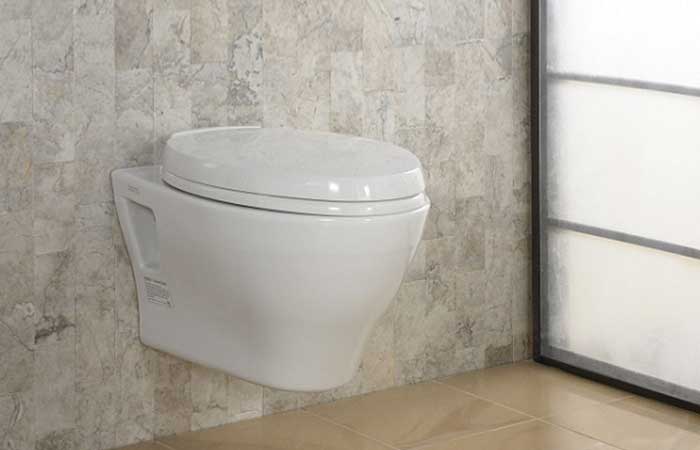Tankless toilets are a modern solution for conserving energy and reducing household water consumption. These innovative bathroom fixtures offer several energy-saving benefits by eliminating the need for a water tank. In this article, we will explore the key features of tankless toilets and explain how they contribute to energy efficiency.
How Tankless Toilets Save Energy
1. Reduced Water Consumption
One of the primary ways tankless toilets save energy is through reduced water consumption. Unlike traditional toilets with a predetermined amount of water with each flush, tankless toilets operate with water-efficient mechanisms. They are designed to provide an effective flush using less water per use. Tankless toilets help conserve water resources and lower water bills by minimizing water waste.
2. On-Demand Heating
Another quality that contributes to the energy efficiency of tankless toilets is on-demand heating. Traditional toilets require a constant supply of hot water to fill the tank, which can lead to energy wastage. In contrast, tankless toilets heat water only when needed. The water is quickly heated as it flows through the toilet, eliminating the need for a storage tank and reducing energy consumption associated with water heating.
3. Smart Flush Technology
Tankless toilets often incorporate smart flush technology, enhancing their energy-saving capabilities. These toilets are equipped with sensors or buttons that allow users to choose between full-flush or half-flush options, depending on their needs. The half flush uses significantly less water, making it ideal for liquid waste disposal, while the full flush handles solid waste effectively. Tankless toilets promote water conservation and optimize energy efficiency by offering flexible flushing options.
Benefits of Energy-Saving Toilets
Apart from energy efficiency, there are several other benefits when opting for tankless toilets.
1. Cost Savings
Tankless toilets can lead to significant cost savings in the long run by reducing water consumption and energy usage. Lower water bills and reduced energy consumption contribute to overall household savings. While the initial cost of installing a tankless toilet may be slightly higher than a traditional toilet, the long-term savings make it a worthwhile investment.
2. Environmental Impact
Using tankless toilets has a positive environmental impact. By conserving water resources, these toilets help address water scarcity issues and contribute to sustainable water management. The reduced energy consumption also helps lower greenhouse gas emissions associated with water heating, further mitigating environmental impact.
3. Long-Term Durability
Tankless toilets are known for their durability and longevity. Fewer mechanical components and no water tank make them less prone to leaks and damage. Choosing a high-quality tankless toilet ensures a reliable and long-lasting fixture in your bathroom, reducing the need for frequent repairs or replacements.
Choosing the Right Tankless Toilet
A few factors must be considered when selecting a tankless toilet to provide optimal performance and energy efficiency.
1. WaterSense Certification
Look for tankless toilets with WaterSense certification. This label indicates that the toilet meets water efficiency and performance criteria the Environmental Protection Agency (EPA) set. WaterSense-certified toilets are designed to use 20% less water than standard toilets without compromising performance.
2. Flow Rate and Gallons Per Flush (GPF)
Check the tankless toilet's flow rate and gallons per flush (GPF). Lower flow rates and GPF indicate higher water efficiency. Aim for a toilet with a flow rate of 1.28 GPF or less to minimize water consumption without sacrificing flushing power.
3. Additional Features and Technologies
Consider additional features and technologies that enhance the usability and efficiency of the tankless toilet. Examples include dual-flush options, touchless operation, self-cleaning capabilities, and adjustable water pressure. These features provide convenience and customization while still prioritizing energy-saving measures.
Future Trends and Innovations in Tankless Toilets
- Enhanced Water Efficiency: Future tankless toilets are expected to further optimize water usage, incorporating advanced sensors and algorithms to precisely control flushing mechanisms. This will result in even greater water conservation without compromising performance.
- Integration with Smart Home Systems: Tankless toilets will likely become integral components of smart home ecosystems, allowing users to monitor and control their toilet's operation remotely via smartphone apps or voice assistants. Integration with home automation platforms will enable seamless coordination with other devices for improved energy efficiency and convenience.
- Sustainable Materials and Manufacturing: As sustainability becomes increasingly important, future tankless toilets may be manufactured using eco-friendly materials and production processes. This includes utilizing recycled materials, reducing water and energy consumption during manufacturing, and designing products with end-of-life recyclability in mind.
- Improved Design and Aesthetics: Manufacturers will continue to innovate in terms of design and aesthetics, offering tankless toilets that blend seamlessly with modern bathroom decor. Sleeker profiles, customizable finishes, and innovative shapes will contribute to their appeal in both residential and commercial settings.
- Enhanced Hygiene Features: Future tankless toilets may incorporate advanced hygiene features such as self-cleaning surfaces, antimicrobial coatings, and hands-free operation. These innovations will not only promote cleanliness but also reduce the need for harsh cleaning chemicals, further contributing to environmental sustainability.
Conclusion
Tankless toilets offer an energy-efficient and eco-friendly solution for households aiming to reduce their environmental footprint and lower utility costs. By implementing reduced water consumption, on-demand heating, and smart flush technology, these innovative fixtures provide a greener alternative to traditional toilets. When choosing a tankless toilet, look for WaterSense certification, consider the flow rate and GPF, and explore additional features that align with your preferences. Switch to tankless toilets and contribute to a sustainable future while enjoying the benefits of energy savings.


